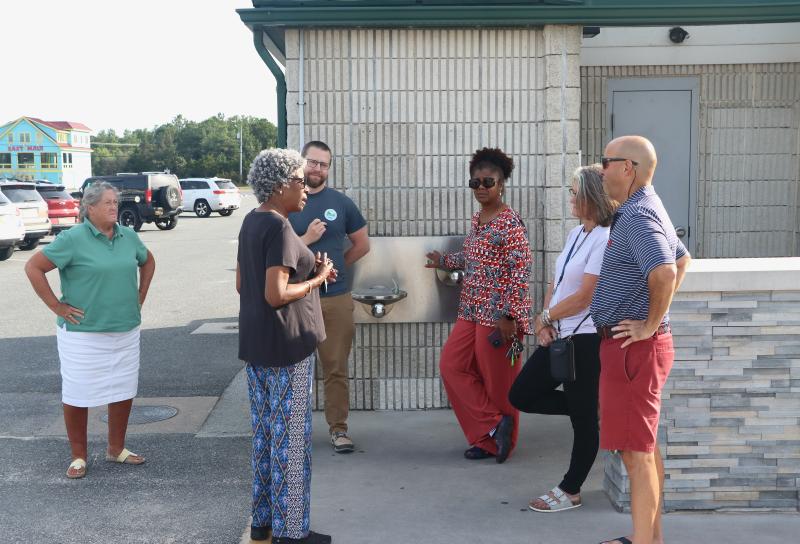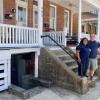Lewes continues talk of replica pavilion on Johnnie Walker Beach

The City of Lewes is continuing its discussion of a proposed replica pavilion on Johnnie Walker Beach.
The permanent structure would be built close to the location of the original pavilion that was used primarily by the city’s African African community for socializing, dancing and sharing meals. The city named Beach 2 after Lewes businessman Johnnie Walker in 2021.
Jesse Hayden, program administrator at the Delaware Department of Natural Resources and Environmental Control, joined members of the Lewes Johnnie Walker Beach Subcommittee for a tour of the site Sept. 21, before the subcommittee’s regular meeting.
Hayden and his team have been working with the city for about two years to find the best location for the pavilion.
Hayden said the 1979 state Beach Preservation Act created a building restriction line that cuts through the existing beach parking lot. Any buildings on the beach side of that line require a stricter approval process.
“It is aimed at protecting the beach and dune as a natural resource, restricting what kinds of things can be built there and protecting structures that do get built from Mother Nature,” he said at the meeting.
Hayden said DNREC can issue a letter of approval for a land-side structure. He said more engineering could be required if there is potential to damage the natural area.
Hayden said there are no size restrictions on land-side buildings.
“On the beach side, the rules are pretty explicit,” Hayden said. “You can’t build anything on the bay side of that line, unless it has to be there for its function, a stormwater outfall pipe or seawall. In this case, I don’t think [a pavilion] would be applicable,” he said.
“Certain areas we know are probably more viable than others,” said subcommittee Chair Trina Brown-Hicks. “It’s not going to happen overnight.”
Parks and recreation Commissioner Kay Carnahan, who oversees the beaches, asked whether the historic and cultural significance of the pavilion could be considered. Based on his team’s research, Hayden said the historical footprint would not qualify.
Hayden and the subcommittee also talked about making the pavilion, and possible concession stand, temporary structures that would be moved on and off the beach for the summer season. Hayden said temporary structures require a different regulatory approval process.
Hayden said the city is free to submit a formal building application with DNREC.
The subcommittee also heard a presentation from Jules Jackson of Coastal Defenders, an environmental and restorative justice organization.
Jackson said she started the organization based almost solely on her experience growing up on Johnnie Walker Beach. “I have a mixed background. My father’s family all went to that beach because it was the only place they could go in the water. I was super affected by that. My mother’s side of the family did not have the same obstacles in access to aquatic spaces.”
Jackson said statistics show that drowning rates for African Americans are still two to five times higher than for whites. She said her goal is to get younger African Americans involved in activities like lifeguarding.
“We bring on the next generation of swimmers, we bring on the next generation of lifeguards, we bring on the next generation of water safety instructors, then we can really start to chip away at this drowning rate,” she said.
Jackson also proposed organizing school partnerships, beach games and an official opening of Johnnie Walker Beach for the summer to get young people involved.
Bill Shull has been covering Lewes for the Cape Gazette since 2023. He comes to the world of print journalism after 40 years in TV news. Bill has worked in his hometown of Philadelphia, as well as Atlanta and Washington, D.C. He came to Lewes in 2014 to help launch WRDE-TV. Bill served as WRDE’s news director for more than eight years, working in Lewes and Milton. He is a 1986 graduate of Penn State University. Bill is an avid aviation and wildlife photographer, and a big Penn State football, Phillies and PGA Tour golf fan. Bill, his wife Jill and their rescue cat, Lucky, live in Rehoboth Beach.




















































